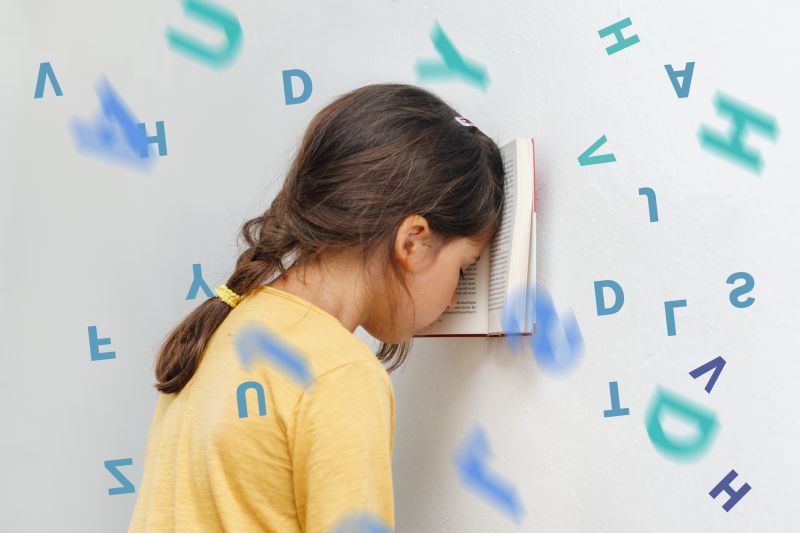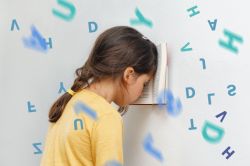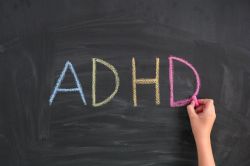Dyslexia is not an inability to read - it is a different way of seeing. A dyslexic brain doesn’t perceive letters as fixed symbols but as shapes, movement, and space. While most people read linearly, the dyslexic mind reads through images, rhythm, and meaning. This is not a flaw in cognition but a different form of intelligence - one that can be supported through light, sound, color, and motion.
How the Visual Brain Thinks
Dyslexia is often described as a “reading disorder,” but in reality, it reflects a different integration of visual, linguistic, and spatial networks in the brain. It’s not a deficit - it’s an alternative neural architecture.
Neuroimaging studies show that people with dyslexia have differences in connectivity between the temporo-parietal region (language processing) and the occipital region (visual center). The brain processes written language more slowly but sees it more deeply - perceiving meaning, pattern, and spatial context rather than mere text. The right hemisphere, which governs imagination and visual-spatial thinking, is often more active than in neurotypical readers.
This kind of brain tends to excel in fields that require creative and spatial intelligence - architecture, design, music, engineering, and visual arts.
Visual Perception and Language
Reading is the process of transforming shape into sound and sound into meaning. In dyslexia, this transformation happens differently - the brain needs to construct meaning, not just decode it. Letters are not immediately linked to phonemes; instead, they form a visual field that must be interpreted.
This can lead to slower reading or visual fatigue, but it also opens up a unique way of thinking in images and associations. Many dyslexic thinkers “see” text as a landscape - perceiving emotional tone, metaphor, and structure rather than linear syntax.
Multisensory Therapy and Dyslexia
The dyslexic brain responds powerfully to multisensory approaches that connect several sensory channels. When text becomes rhythm, color, or movement, comprehension follows a new path - one that feels natural to the visual brain.
- Light - Soft, steady lighting and color filters (blue-green or amber tones) can reduce visual stress and support smoother reading.
- Photobiomodulation (e.g. Vielight Alpha 10 Hz) enhances hemispheric synchronization and focus.
- Sound - Rhythmic frequencies (around 10 Hz) strengthen communication between auditory and visual areas. Music or rhythmic cues during reading improve fluency and memory retention.
- Color - Color-coded structures and backgrounds help the visual brain organize text and maintain reading rhythm.
- Scent - Essential oils such as rosemary, lemon, or peppermint support alertness and activate prefrontal focus.
- Eye movement - Eye-tracking exercises or following light patterns help improve coordination and attention.
Through multisensory therapy, the dyslexic brain learns to use its visual intelligence as an advantage - integrating image, rhythm, and perception into one coherent experience.
When Reading Becomes Vision
Dyslexia is not a limitation, but a different way of knowing - a reminder that language can also be rhythm, image, and light, and that understanding often arises where words end.
Part of the Light Brains series: Neurodivergence and Multisensory Therapy
→ Introduction: Neurodivergence and Multisensory Therapy
→ ADHD and Attention in Motion
→ Autism and Sensory Sensitivity
→ Dyslexia and the Visual Brain
→ High Sensitivity as a Form of Neurodivergence
→ The Creative Brain and Expanded Perception
Recommended Reading
- Shaywitz, S. E., & Shaywitz, B. A. (2008). The neurobiology of reading and dyslexia. Biological Psychiatry, 63(7), 601-606. → A review of the neural mechanisms underlying reading and the differences in brain activation found in dyslexia.
- Eden, G. F., & Moats, L. C. (2002). The role of neuroscience in the remediation of students with dyslexia.Nature Neuroscience, 5(11), 1080-1084. → Shows how neuroscience can inform more effective interventions for students with dyslexia.
- Gabrieli, J. D. E. (2009). Dyslexia: A new synergy between education and cognitive neuroscience.Science, 325(5938), 280-283. → Discusses the bridge between brain research and education in addressing dyslexic learning profiles.
- Simos, P. G., Breier, J. I., Fletcher, J. M., Foorman, B. R., Castillo, E. M., & Papanicolaou, A. C. (2000). Brain activation profiles in dyslexic children during non-word reading: A magnetic source imaging study.Neuropsychology, 14(4), 611-620. → A study of brain activation patterns during reading tasks in dyslexic children.
- Arns, M., Trullinger, M., & Breteler, R. M. J. (2018). EEG-neurofeedback in dyslexia and ADHD: Mechanisms and clinical outcomes.Frontiers in Human Neuroscience, 12, 506. → Research on how neurofeedback and light stimulation can improve reading and attention regulation.
This text is part of the Light Brains series on neurodivergence, brainwave dynamics, and multisensory balance.
🌐 www.lightbrains.online





